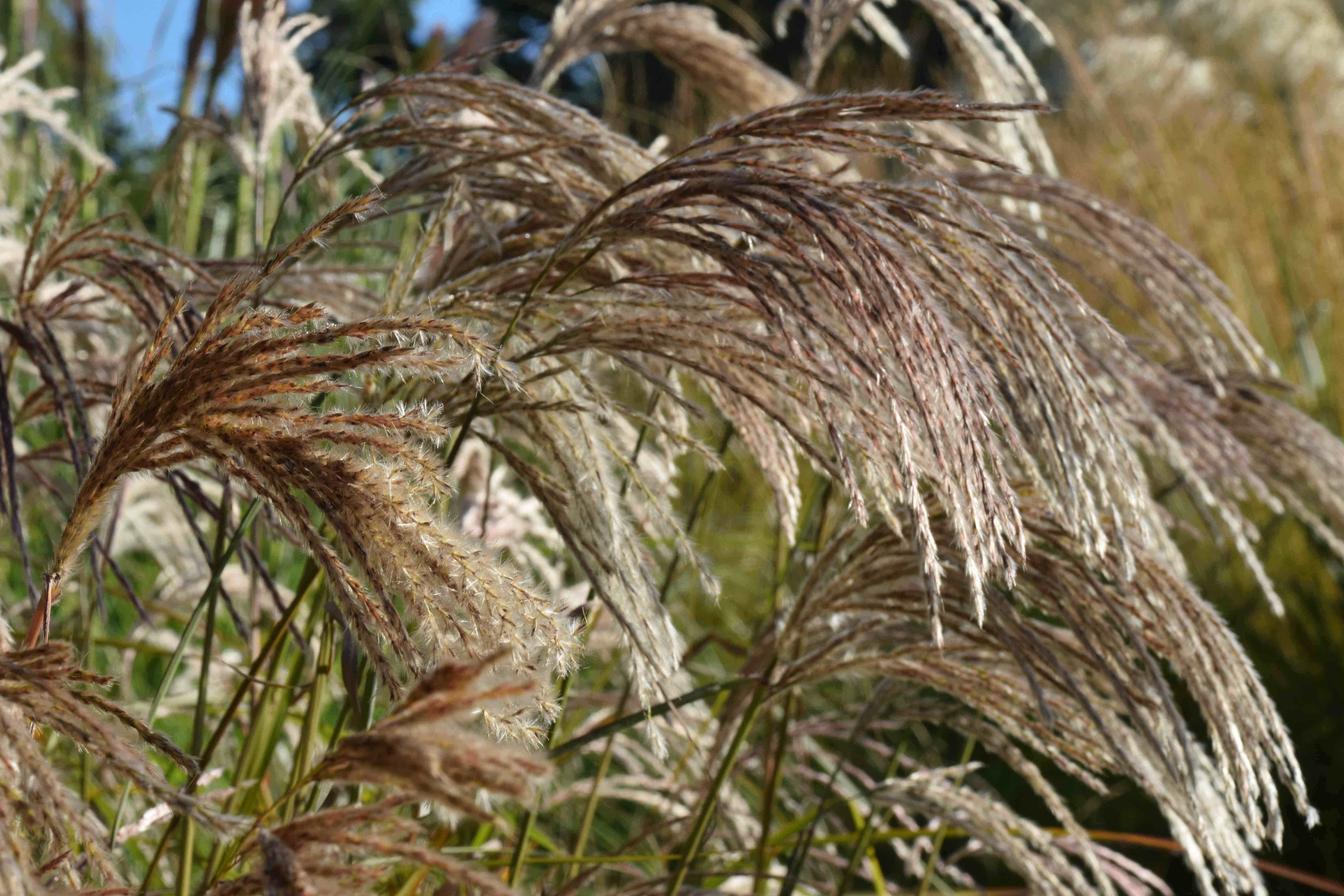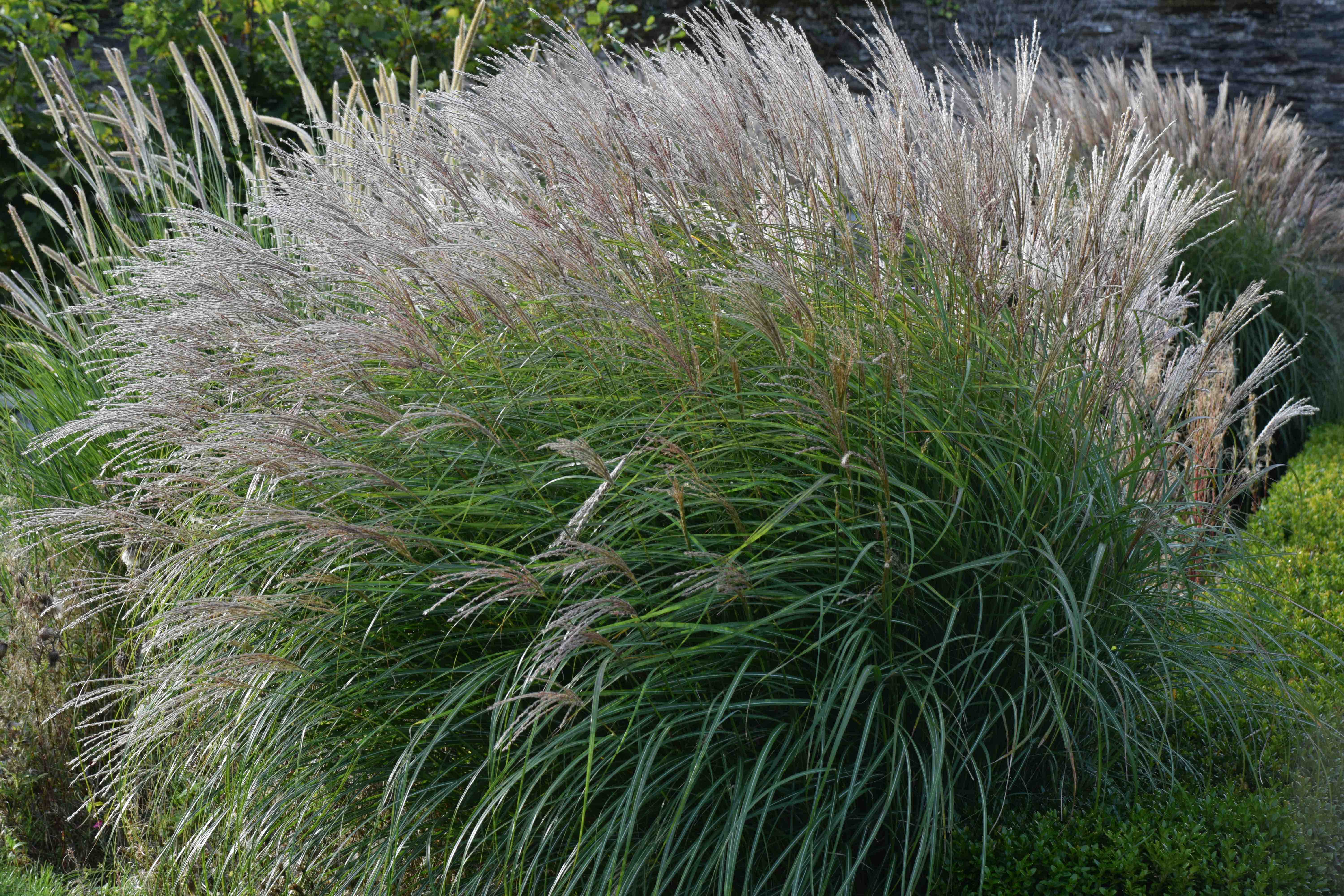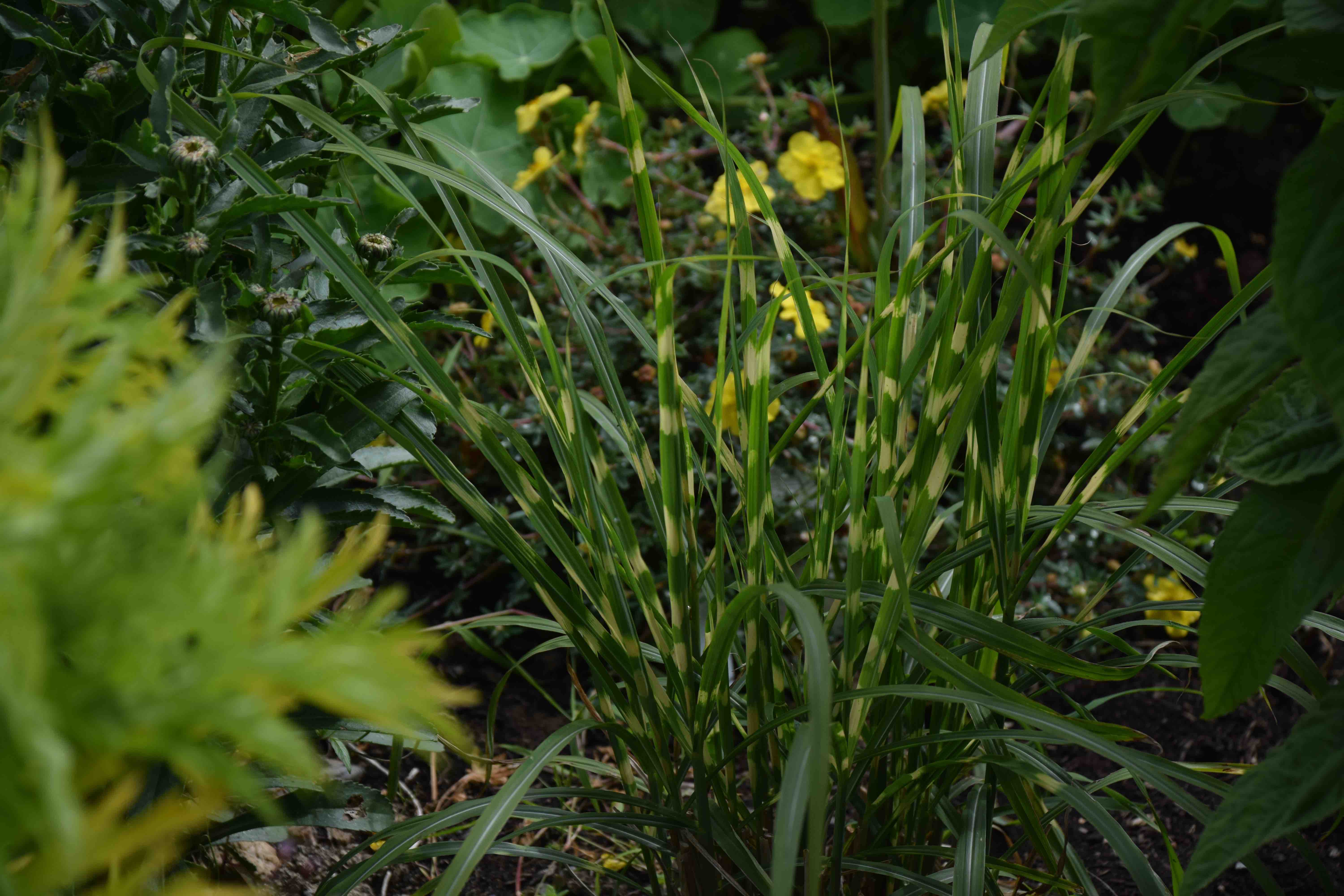
Grasses are enjoying enormous popularity but they are a confusing bunch. Lots of plants sold as grasses are not grasses at all but are sedges and rushes. Some are grown for foliage while others for their delicate flowers. Magazines glitter with wonderful photos of brassy grass stems gilded with frost but in our wet and windy climate they are more often reduced to drunken piles of plant debris by winter.
I think the best place to start with grasses is the miscanthus. These form dense clumps, will not seed everywhere or run through the border and there is enough variety for every garden. So, with the caveat that there are many more grasses that deserve attention, this week we will look at miscanthus and particularly forms of Miscanthus sinensis, the best known and most widely grown.
Why grow it?
Miscanthus are hardy, clump-forming grasses. They send up leafy shoots that reach their full height by late summer and they usually end in a fluffy, feathery flowerhead that is often red or tinged with red at first but ages to silver or gold. Some have variegated leaves. Their height varies from 1m to 2.4m or more. The taller kinds are great for screening but they turn brown in autumn and must be cut down in late February or March. Unlike bamboos, these will not spread but they won’t offer a screen all year. Their garden appeal is the great fountains of foliage in summer and the often spectacular flowers in autumn. As such they are much better garden plants than pampas grass.
Where to grow it
All are best in full sun but soil is not a problem provided it is not especially dry or wet. They prefer rich soil and will not attain their full potential in poor soils although they will still grow. A few of the variegated kinds are less hardy than most but winter hardiness is not likely to be an issue in this area.
Where to start
Any miscanthus for sale at Nag’s Hall will be named varieties and worth planting. Even so, I have a few favourites and these are worth asking for if not in stock! Miscanthus are known for their vigour and they are often called elephant grass, presumably because you could hide an elephant in them! The biggest miscanthus are now widely planted by farmers as biofuel or to make ‘strawboard’, they are so fast-growing. So it is worth me starting with one of the smallest, that can fit into any garden.
‘Kleine Silberspinne’ is possibly my favourite miscanthus and the name means ‘little silver spider’ which is very appropriate, though it could also be ‘little silver spider’s web’. Only reaching a maximum height of 1.2m, it has narrow, greyish green leaves and flowers relatively early, with a mass of silvery grey flowerheads. It is small enough to fit into any garden and dramatic enough to be worth the space.

For colour, there are many choices, typified by ‘Malepartus’ which has rich red flowers on tall plants. ‘Kaskade’ has pink blooms fading to silver and an elegant habit and grows slightly smaller at about 1.5-2m. Perhaps the most popular are those with variegated leaves. ‘Cabaret’ and ‘Cosmopolitan’ are both green and white-striped with relatively broad leaves and very showy. They rarely flower. Both reach 2.4m and are rather exotic. ‘Dixieland’ is one I am trying and is more delicate with narrow leaves and only about 1.2m high.
There are several with a rather strange variegated pattern with transverse stripes on the leaves. ‘Zebrinus’ is the most common and ‘Little Zebra’ is a smaller form, only reaching 1.2m. I now have the latter and although it can produce pinkish flowers, mine rarely does. In theory I think the plant is rather ‘tacky’ but I actually like it and the fact that I have divided it and now have six clumps says more than words can!

What to do
You can plant a pot-grown miscanthus at any time and you can pop one in the border now. Choose a sunny site in good soil for best results. Make sure you give it room to grow! Trimming and dividing must wait till spring. You should not divide plants in winter but wait until growth is just starting. The old stems need to be cut down in winter or spring. You must do this just as new growth is appearing and you can cut the old stems back to 15cm-30cm. If you leave it too late there will be a mixture of old and new stems and you will need to prune individual stems rather than just shear them off – and that takes a lot longer.
The clumps are woody at the base and can be divided in spring, immediately after pruning them back. You will need a sharp spade to chop the clump in half or to chop off outer sections.
You can grow miscanthus in pots but the larger kinds look out of place and are likely to be blown over. If you do grow them in pots use a soil-based compost and be prepared to water and feed regularly.
Who will like this?
Anyone who appreciates form and texture as well as colour. None of the common miscanthus are invasive and all are dramatic and easy to please.
Plant them with …
The bigger kinds are suitable as lawn specimens and the smaller kinds look good in gravel gardens. The bigger kinds are suitable for the back of a border and with late-flowering perennials or shrubs with good autumn colour.
Weekly reminders
The weather is decidedly cooler and a reminder that , although it is the last summer Bank Holiday, autumn is round the corner. The main job I will be doing is taking pelargonium and salvia cuttings – these need to be taken in the next few weeks.
Potato Blight
Potato blight is most prevalent in damp, warm weather when the foliage remains wet for more than 24 hours. You should have harvested your early potatoes so they are rarely affected but main crops are prone. My earliest were, unusually, attacked because of the wet July and August. Foliage turns black almost overnight and plants collapse. The spores drop onto the soil and if washed onto the tubers can ruin the crop. If you see signs you must lift the crop immediately and dry the tubers before storage. Blight also affects tomatoes with the same symptoms which is why they are best grown under cover, so the leaves do not get wet in stormy weather.
If blight strikes your crop most years, think about growing a resistant type next year. I have grown all the Sarpo varieties and they are dependable – a note for next year!
Thin vine leaves
If you are growing grapes to need to thin the foliage as the fruit develop. It controls the size of the plant, allows sunshine to ripen the fruits and it increases air circulation around the fruit, reducing mildew.
Deadhead lilies
As the petals drop you should deadhead lilies. Fallen petals can cause the leaves to rot, especially in wet weather. You can cut off the flower head but leave as many leaves behind as possible. When cutting for the house always aim to leave at least half the stem behind so the foliage can build up the bulbs for next year.